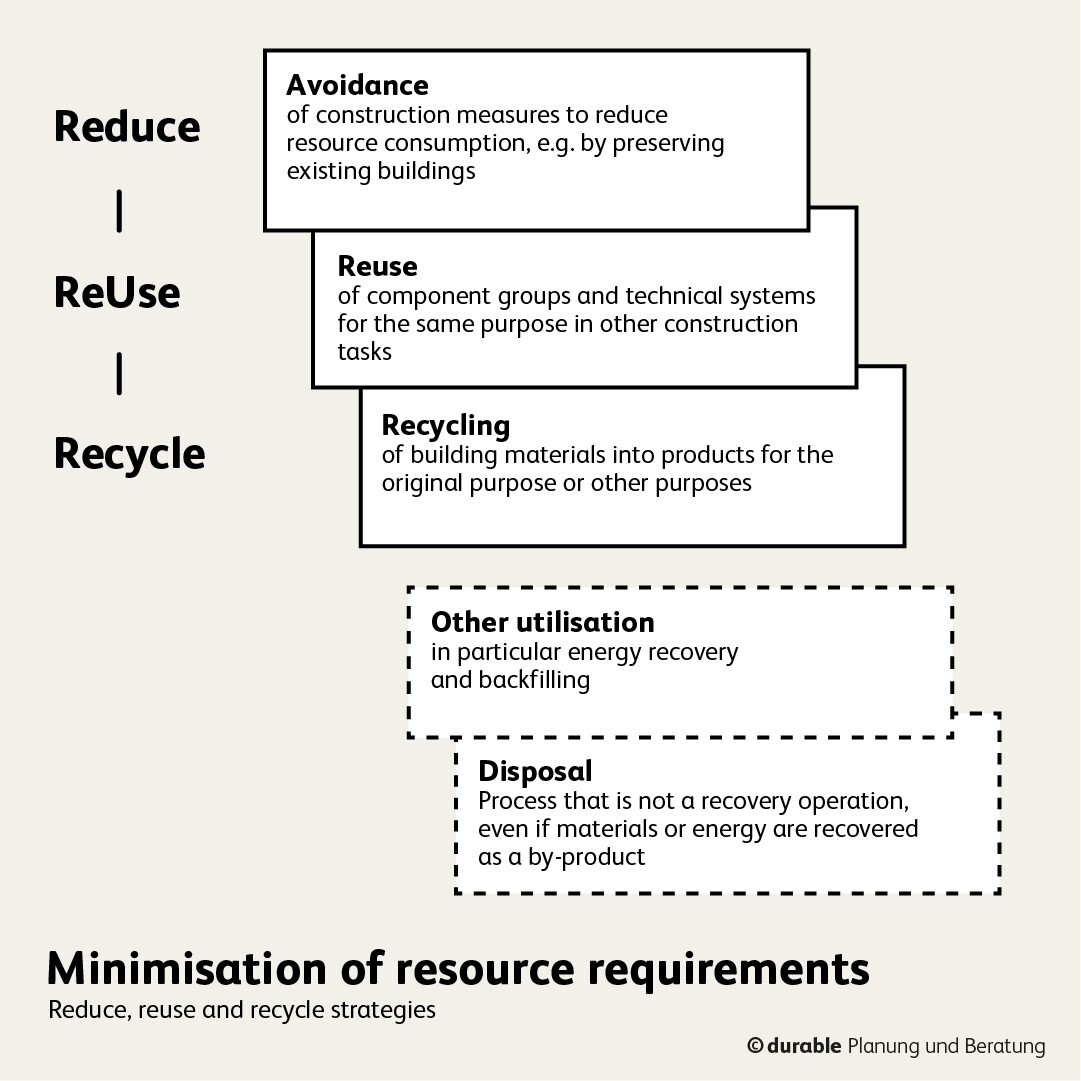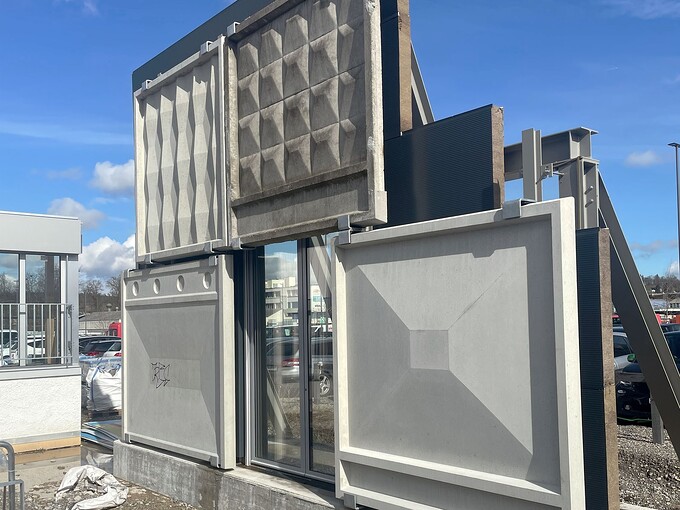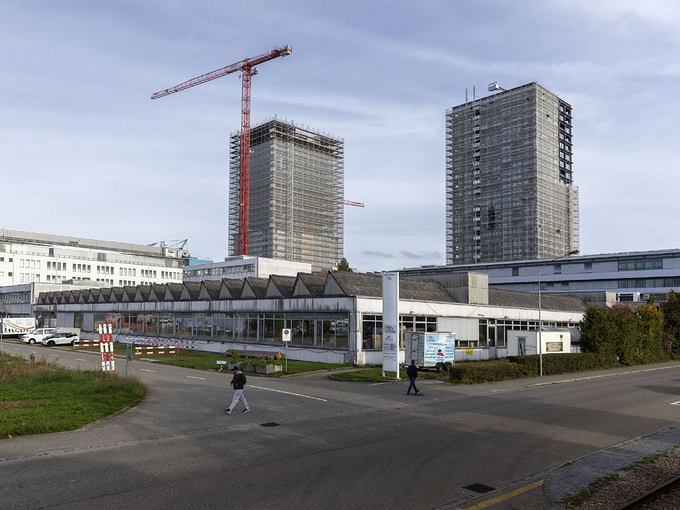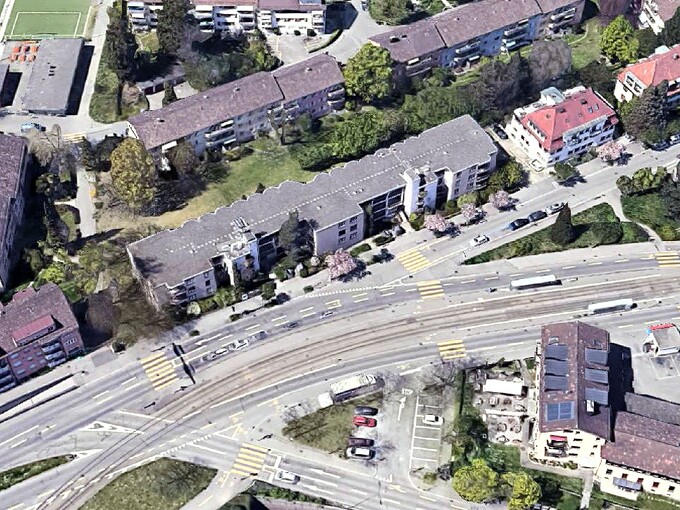The circular economy is a regenerative system that aims to minimise resource use and emissions by slowing down, reducing, and closing material loops. This is achieved by extending the lifespan of buildings (REDUCE), focusing on maintenance and repairs, reusing building components (REUSE), and, when necessary, recycling materials (RECYCLE). Recycling is usually seen as a last resort.
In contrast, the linear economy typically uses materials once, with little emphasis on reuse or recycling.
To effectively reduce greenhouse gas emissions, preserving existing buildings is the most impactful strategy within the circular economy. This approach minimises new construction, instead focusing on keeping buildings intact for as long as possible by maintaining and upgrading them. Where necessary, inner-city densification can still be achieved by thoughtfully and technically extending existing structures. This requires early planning, including building assessments and feasibility studies.
The circular economy is a strategic consideration that should be integrated into sustainability strategies from the start. It is also the climate and environmental objective no. 4 under the EU Taxonomy. Companies in the construction and property sectors are encouraged to adopt circular economy principles. Durable offers services to help implement these strategies, including feasibility studies, project evaluations, and advisory roles, in line with educational and research efforts.

References

Guidelines for implementing the circular economy in portfolio and asset management
Our clients are increasingly focused on implementing circular economy methods, driven by changing regulations that mandate this approach. For example, the EU Taxonomy recognises the circular economy as one of its six climate and environmental objectives.
At Durable, we support institutional developers, housing cooperatives, and public sector bodies in developing circular economy measures. As part of broader sustainability strategies, we create comprehensive guidelines that outline key concepts, set goals, define specific actions, and establish targets. These guidelines also help integrate circular economy principles into portfolio management, asset management, and facility management. We have successfully developed such frameworks for clients including AXA and Pensimo.

Circular economy in competitions and other allocation of contracting services
The circular economy is becoming increasingly important in allocation processes such as competitions, feasibility studies, and planning tenders. Today, tenders for already developed properties often explore options for preserving existing structures while incorporating extensions for inner densification. Early-phase decisions on construction and design in these selection processes are crucial, as they can facilitate the use of ReUse methods and ensure the construction approach aligns with circular economy principles.
Examples of this approach can be seen in projects overseen by Durable, such as the planning for Pensimo Management AG, including the redevelopment of construction site F on the Zwhatt site in Regensdorf and the Mooshalde site in Männedorf. An explicit focus on ReUse is also central to the planning tender by the City of Uster for one of its properties from its financial portfolio. Durable provides expert advice to clients, helping them shape selection processes that effectively integrate high-level circular economy goals.

Zirkulär Bauen: Leitfaden für Investoren und Bauherrschaften
Circular Construction: A Guide for Investors and Developers
As a resource-, emissions-, and waste-intensive sector, the real estate industry bears significant responsibility for conserving resources and reducing greenhouse gas emissions. In this context, the transformation from a linear to a circular economic and societal model is becoming increasingly important. Implementing circularity in the real estate sector requires a fundamental rethinking of existing processes.
With the support of Energieschweiz, PSP, SENN, Roche, Siemens, Terresta and in collaboration the Charter for Circular Building, Durable and Wüest Partner have developed this guide to provide a foundation for circular construction for investors and developers.


